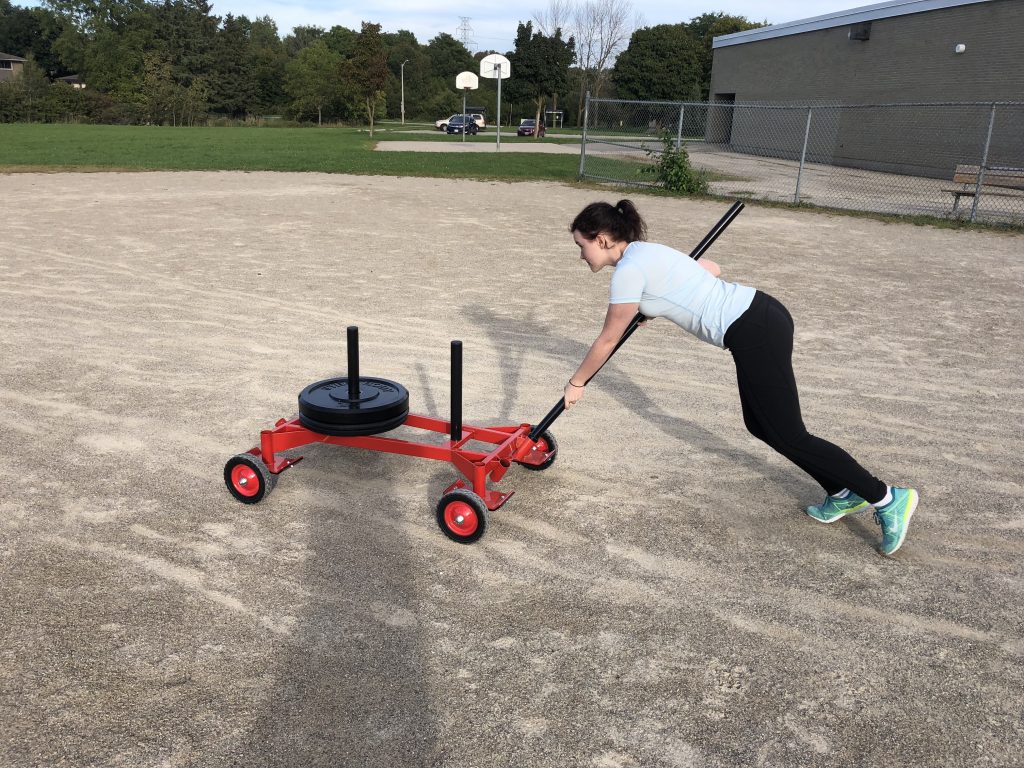As I write this, I am a mere four weeks from returning to the ice at the Curling Canada NextGen camp, to be held at the K-W Granite Club here in Waterloo. The OJCT Tour will begin Labour Day weekend – just six weeks away.
With the competitive U21 season in Ontario so compressed – 12 weeks between Labour Day and U-21 qualifiers – the summer months are THE time to improve one’s fitness, enhance flexibility, and permit injuries to heal. Between the demands of post-secondary school and the competitive season, there will be little time to improve one’s fitness during the fall semester. Rather, the best one can hope for is to maintain the elevated fitness levels achieved during the summer months through the competitive season.
Every competitive player should have a summer training plan designed by a qualified personal trainer or kinesiologist. While a “generic” training plan is slightly less costly, ideally a customized plan designed for you and for your specific needs is usually a better bet. Many junior and adult competitive players have chronic issues [4] – shoulders, back, or knees – that a personalized training plan will better accommodate. Front-end players, in particular, can suffer from a variety of issues due to brushing. In their study, Reeser and Berg [4] documented back pain, tendon issues, and even herniated discs as repetitive stress injuries resulting from brushing.
A well-designed training plan will assist in avoiding injury during the season. In addition, improving one’s strength and conditioning will significantly assist in the production of greater vertical force during brushing, leading to a greater generation of heat and hence better shot outcomes. In their study of junior competitive players in Thunder Bay, Kivi, Auld, Leon-Carlyle and Witiluk [3] corroborated the recommendations found in [2]:
The results of this study support the recommendations provided by Behm (2007), in which muscular endurance, trunk strength, aerobic capacity, and flexibility are factors which influence performance and should be incorporated into a training program. Core strength, including both abdominal and lower back, appear to be particularly important for curlers as was seen in the excellent performance in the sit-up test and back extension test. A strong core would provide a strong foundation for the torques generated by the limbs during sweeping, as well as offsetting the destabilizing action of the stone during the delivery (Behm, 2007).
Similarly, the very good performance in the vertical jump test supports the need for a strong lower body necessary for balance and stability during sweeping. For the delivery, lower body strength is important in reducing the relative percentage of maximal force applied, which will help improve precision by allowing for a greater percentage of slow-twitch fibres to be recruited (Behm, 2007).
Unsurprisingly, their study indicated several physical characteristics where the study’s subjects – male competitive Junior players aged 17-20 – fell short. Two of these were lower body flexibility and upper-body strength, important factors in brushing. While the athletes scored well on vertical jump, partial pull-ups, and back extension measures, another shortcoming was the athletes’ low average score for the standard 20m Beep test: 7.3, well below average for male athletes in their age category. Good aerobic performance is also a requirement for a front-end player. We know from testing with instrumented brushes at various curling camps over the past four years – and documented in another study by Auld and Kivi in 2011 [1] – that brushing performance can drop significantly from shot to shot, and a good aerobic energy pathway significantly aids recovery between shots:
In a game, sweeping for only short intervals may not be sufficient to manipulate the speed or line of the rock enough to improve the outcome of the shot. In these situations a player can not avoid longer durations of sweeping. This emphasizes the importance of fitness training as a means of avoiding fatigue during curling. Players can not always control the recovery time or the amount of sweeping, but they can control the amount of time and effort that is dedicated to fitness training. Increasing aerobic fitness will theoretically increase the body’s ability to cope with increased oxygen demand during sweeping (Powers & Howley, 2007).
An effective summer training plan for a front-end athlete, then, will include at least the following:
- upper-body strength training;
- core strength training;
- aerobic conditioning;
- interval training, and
- a balanced approach to offset the asymmetric loads on the body incurred in curling.
Additionally, one can utilize dryland training apparatus to practice brushing footwork as a closed kinetic chain exercise, for both open and closed stances. These apparatus assist with core strength training while permitting the athlete to practice movements with their feet behind their hips, so as to maximize vertical force in a brushing context when they return to the ice.
It is never too late to start training. If you don’t have a fitness plan, you can get one from outstanding accredited Kinesiologists such as Stephanie Thompson or Sabrina Ribau who are also players and have an excellent understanding of the physical requirements of the game.
[1] Tracy Auld and Derek Kivi (2011). Heart Rate Recovery in Competitive Curlers After Maximal Effort Sweeping.
[2] David G. Behm (June 2007). Periodized Training Program of the Canadian Olympic Curling Team. Strength and Conditioning Journal 29(3), pp. 24–31.
[3] Derek Kivi, Tracy Auld, Carlos Leon-Carlyle, and David Witiluk (September 2011). Physical and Physiological Assessment of Competitive Junior Curlers. In Abstracts of the 2011 CSEP General Meeting, Applied Physiology, Nutrition, and Metabolism, 2011, Vol. 36, No. S2 : pp. S299-S360.
[4] J. C. Reeser and R. L. Berg (2004). Self reported injury patterns among competitive curlers in the United States: a preliminary investigation into the epidemiology of curling injuries. British Journal of Sports Medicine 38:e29.

As always Glenn, thank you for your dedication to making sure your articles are well written but supported by real data.